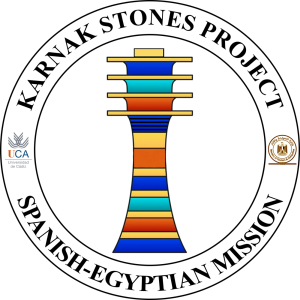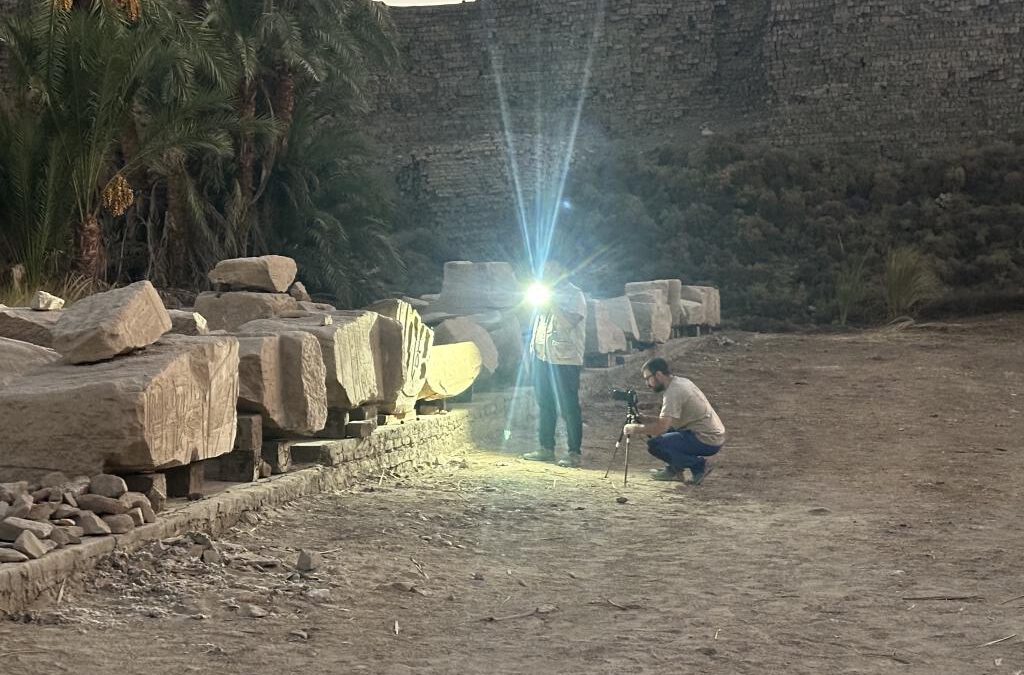At Karnak, every stone block has a story to tell (Every scratch and groove tells a story), but many of
these stories are hidden beneath layers of weathering and time. To reveal these concealed details, we
turned to an extraordinary technique: Reflectance Transformation Imaging (RTI). This cutting-edge
method allows us to capture the finest surface details of the stones, bringing out features that would
otherwise be invisible to the naked eye. RTI works by photographing the stone under varying angles
of light, capturing how the surface reflects light from multiple directions. The data collected is then
processed into a detailed digital model that allows us to manipulate the light direction virtually,
highlighting subtle textures, tool marks, and even cracks that are otherwise concealed. What’s
remarkable about RTI is its ability to reveal nuances in the stone’s surface that go unnoticed under
typical lighting conditions, such as worn inscriptions, fine scratches, and grooves left by the ancient
sculptors. This technique is particularly invaluable for understanding the history of the blocks. Many
of the stone surfaces at Karnak bear evidence of past craftsmanship, including marks from chisels and
tools used by ancient artisans. RTI not only helps us identify these tool marks but also sheds light on
the methods and techniques employed by the stoneworkers of the time. By examining these finer
details, we gain insights into the evolution of the site’s construction and the intricacies of its artistic
expression.
Furthermore, RTI is instrumental in assessing the current condition of the stones. Many blocks are
weathered by centuries of exposure to the harsh Luxor climate, and cracks, erosion, and surface
degradation can threaten their structural integrity. RTI enables us to detect even the smallest signs of
damage that might otherwise go unnoticed, allowing us to monitor the stone’s condition over time
and make more informed decisions about conservation efforts. Perhaps most compelling of all is the
way RTI helps us piece together the blocks’ broader history. Every scratch, groove, and imperfection
tells a story of human effort, natural forces, and the passage of time. By using RTI, we’re able to
uncover layers of this history, creating a more complete understanding of Karnak’s past. As we
continue to apply RTI across the site, we unlock a deeper level of detail in our documentation and
conservation efforts. These digital records not only preserve the stones as they are now, but they also
offer a window into the ancient world, one that will continue to reveal its secrets for generations to
come.

